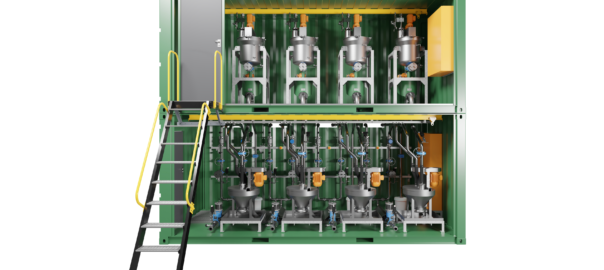With its latest sampling system that aligns with metallurgical accounting standards, minerals processing equipment company Multotec says it now offers unprecedented levels of accuracy for effective plant optimisation.
The company’s Realtime Automated Metallurgical Accounting (RAMA™) system promises to deliver significant value by unlocking higher mineral content through improved grade control and recovery, as well as by optimising the consumption of reagents. The system brings together three sampling disciplines – metallurgical accounting slurry sampling, sub-sampling, preparation and analysis – into one solution, it says.
“By integrating our advanced samplers with a sample preparation system that meets metallurgical accounting standards, we can feed online analysers with a fully representative and accurate sample,” Modisaotsile Nyokong, Process Manager at Multotec, says. “While analysers can be accurate instruments, they cannot provide meaningful results if they are fed with inaccurate samples.”
Nyokong highlights that the RAMA online analysis feed preparation system extracts regular and full sample increments from slurry flow streams according to AMIRA P754 metal accounting standards, best practice standard and Theory of Sampling (TOS). This eliminates more than 80% of the total sampling error and allows real time process control to be conducted to the highest standard, according to the company.
“Samples are extracted from the production flow using automated mechanical samplers which are TOS compliant,” he says. “This is achieved by taking full cross-cut samples that are representative of the flow stream.”
The analysed slurry is therefore unbiased, presenting an accurate reflection of all the key parameters such as particle size, slurry density, settling velocity and mineral grade, Multotec claims. Nyokong explains that process control samplers – including pressure pipe, poppet and shark fin type samplers – have traditionally been used to feed online analysers. However, these primary samplers do not comply with the TOS, with the result that poorly represented samples are analysed with high levels of precision – a futile exercise.
“Our advantage with the RAMA system lies with feeding representative samples to online analysers, using correct sampler designs,” Nyokong says. “This produces real-time results that represent the flow stream and are free of error or statistically significant bias.”
Multotec’s slurry sample preparation solution prepares and treats each analysis stream in its own line, making it ideally suited to analysers that deal with streams individually. This avoids cross-contamination. Where multiple streams are analysed through the same analyser source and detectors, some cross contamination of streams can occur with different grades or mineral properties – undermining the accuracy of the result.
Over an analyser multi-stream cycle, the RAMA system can collect composite samples for each stream, according to Willem Slabbert, Sampling and Magnetics Product Specialist at Multotec. This means the analyser does not measure the instantaneous off-take stream ‘sample’ from the traditional in-line continuous discharge like process control samplers – which is only done about 30 minutes apart.
“Rather, it measures the performance of each stream through multiple composite samples taken over the 30-minute interval,” Slabbert says “This reduces the grade or quality variability per flow stream, and gives the plant manager a more representative monitoring of minimum and maximum process conditions – with precise values.”
The problem with ‘snapshot’ sampling of process control samplers is that stream properties can fluctuate before and after the analysis., meaning the fluctuation is not captured in the results. By contrast, the RAMA system’s composite sample accounts for all process variations over the analysis period, according to Multotec.
Slabbert reiterates that sample analysis results are only as good as the sample presented for analysis, pointing out that this applies as much to online analysers for process control as it does to conventional laboratory analysis for metallurgical accounting.
“RAMA is also a cost saving solution, as separate process control samplers are no longer required,” he says. “The samplers’ purpose in our system is doubled up for both metal accounting and for process control – without the need for any compromise.”
Configured in a containerised and modular design, RAMA is a compact and mobile system. This allows for easy installation and retrofitting into any plant operation, where it can feed any type of online analyser. It can also be readily transported and commissioned, with flexibility for expansion where necessary. Layout options are available for plants that have primary and secondary sampling with a subsequent containerised sample preparation stations, as well as for those with primary sampling only and separate secondary sampling preparation.
The RAMA system allows analysers, for the first time, to be fed with representative samples taken from the production flow stream, according to the company.
Multotec added: “The innovative combination of existing equipment with proven track record into a modular, containerised solution will bridge the gap between metallurgical accounting accuracy and accurate process control.”
Slabbert concluded: “The advantages of this novel combination of sampling global best practices into process control applications will unlock value for both analyser calibration as well as optimal, dynamic process performance.”







